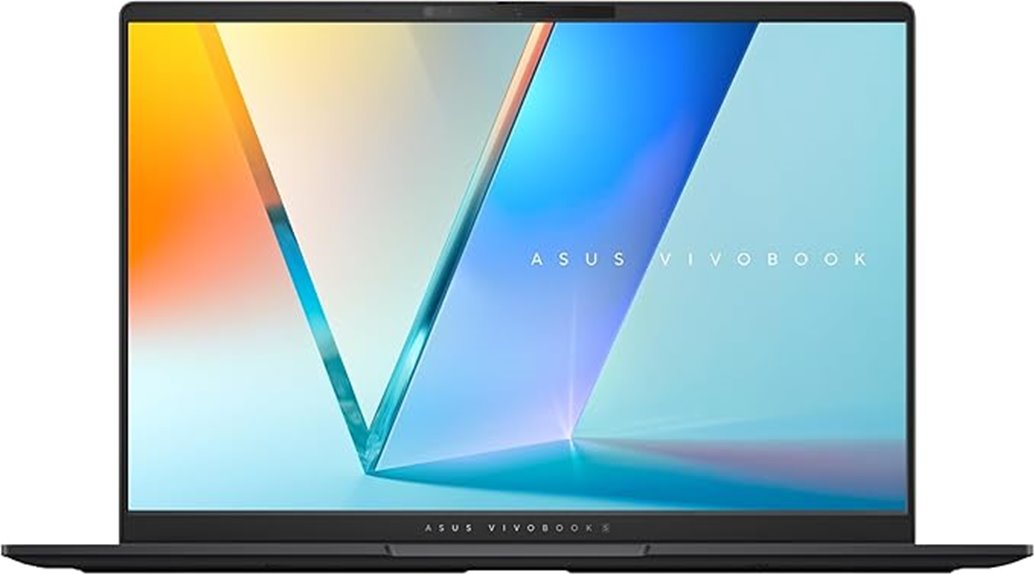Best Laptop for Data Analysis (Top 5 Picks for 2025)
For data analysis in 2025, you’ll want laptops that blend performance with portability. The Apple 2024 MacBook Pro with the M4 chip excels in speed and battery life. The Acer Swift X 14 offers powerful graphics with its Intel Core Ultra processor and NVIDIA GPU. If you prefer something lighter, consider the MacBook Air 15-inch or the ASUS Vivobook S 14 OLED for vibrant displays. Each of these options has unique features tailored for data tasks—discover which ones suit your needs best.
Quick Guide
- The Apple 2024 MacBook Pro with M4 chip offers exceptional multitasking and performance, ideal for intensive data analysis tasks.
- Acer Swift X 14 features an Intel Core Ultra 7 and NVIDIA RTX 4060, perfect for handling demanding data software with vibrant OLED visuals.
- The Apple MacBook Air 15-inch combines impressive performance with portability, providing excellent battery life for on-the-go data analysis.
- ASUS Vivobook S 14 boasts an AMD Ryzen 9 processor and a vibrant 3K OLED display, making it suitable for high-performance data tasks.
- Samsung Galaxy Book4 Pro features a lightweight design and a stunning AMOLED display, ensuring seamless multitasking and vibrant visuals for data analysis.
In the interest of full disclosure, we would like to inform you that some links on our website are affiliate links. By clicking on these links and completing a purchase from our partners, we may receive a nominal commission at no extra cost to you. Rest assured, our affiliate partnerships do not compromise the integrity of our editorial content or product evaluations. For further clarification, kindly refer to our comprehensive affiliate disclosure.
Table of Contents
What Are the Best Laptop for Data Analysis to Buy This Year?
Here are my top picks for the best laptop for data analysis to purchase this year.
1. Apple MacBook Pro Laptop with M4 Chip
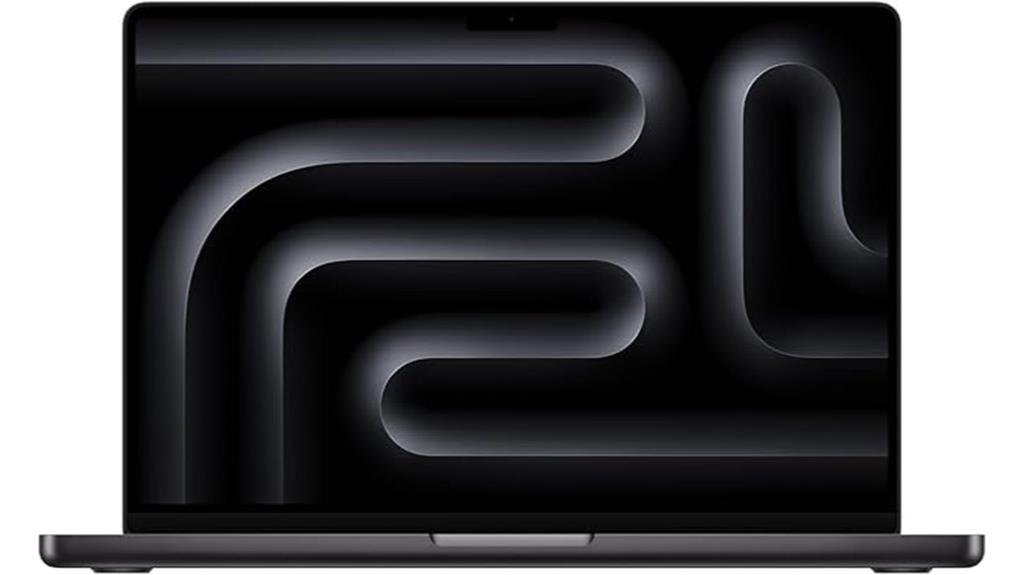
If you’re a data analyst seeking a powerful and efficient laptop, the Apple 2024 MacBook Pro with the M4 chip is an outstanding choice. With a 10-core CPU and GPU, this laptop excels in multitasking and running demanding applications. Its 14.2-inch Liquid Retina XDR display, boasting 1600 nits peak brightness, provides stunning visuals that enhance your data analysis. Plus, the all-day battery life means you won’t be tethered to a power outlet. It integrates seamlessly with other Apple devices, ensuring a smooth workflow and supporting essential apps like Microsoft 365 and Adobe Creative Cloud. You’ll love the efficiency it brings to your projects.
Best For: Data analysts and professionals seeking a powerful laptop for multitasking and demanding applications.
Pros:
- Exceptional performance with the M4 chip’s 10-core CPU and GPU for efficient multitasking.
- Stunning 14.2-inch Liquid Retina XDR display with high brightness and contrast for enhanced visuals.
- Seamless integration with the Apple ecosystem, supporting essential applications like Microsoft 365 and Adobe Creative Cloud.
Cons:
- Higher price point compared to other laptops in its category.
- Limited upgrade options for memory and storage post-purchase.
- May have a learning curve for users transitioning from Windows to macOS.
2. Acer Swift X 14 Laptop (SFX14-72G-77NJ)
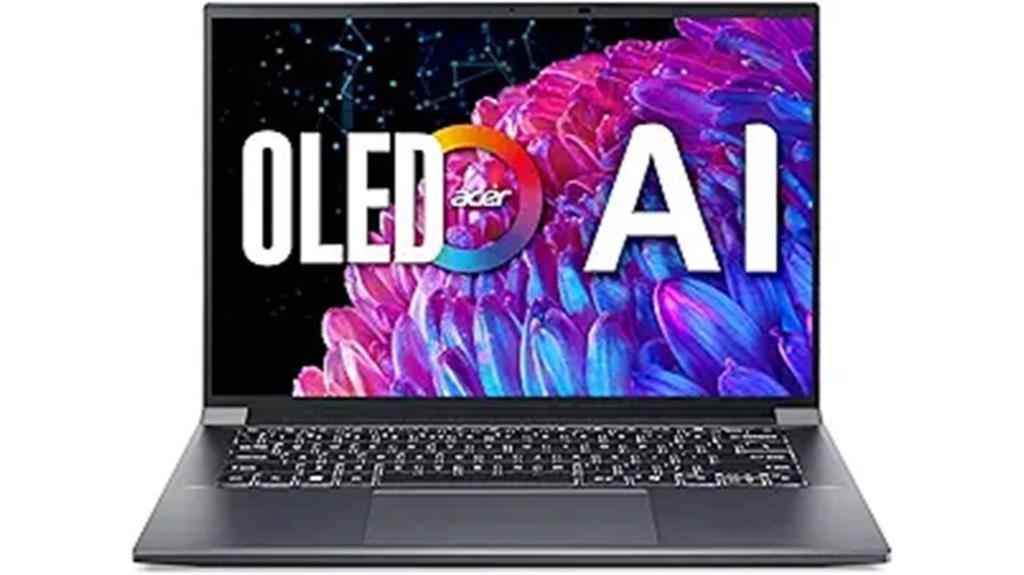
The Acer Swift X 14 Laptop (SFX14-72G-77NJ) is perfect for data analysts who demand powerful performance and efficiency in their workflow. With an Intel Core Ultra 7 processor and NVIDIA GeForce RTX 4060 GPU, it handles graphically intensive software with ease. The stunning 14.5-inch OLED display offers vibrant visuals and TÜV Rheinland certification for eye comfort. Plus, the built-in AI tools enhance multitasking capabilities. You’ll appreciate the 16GB RAM and 1TB SSD for smooth operations, while the 1080p webcam with noise reduction ensures clear video calls. Overall, this laptop is equipped to meet your data analysis needs effectively.
Best For: Data analysts and creators seeking powerful performance, efficiency, and high-quality visuals in their workflow.
Pros:
- Exceptional performance with Intel Core Ultra 7 and NVIDIA GeForce RTX 4060 for handling demanding software.
- Stunning 14.5-inch OLED display with high resolution and TÜV Rheinland certification for reduced eye strain.
- Enhanced collaboration features with a high-quality webcam and AI noise reduction for clear video calls.
Cons:
- Limited upgrade options due to soldered RAM and SSD components.
- The compact size might not be suitable for users preferring larger screens for multitasking.
- Price point may be on the higher side for budget-conscious buyers.
3. Apple MacBook Air 15-inch Laptop with M4 Chip
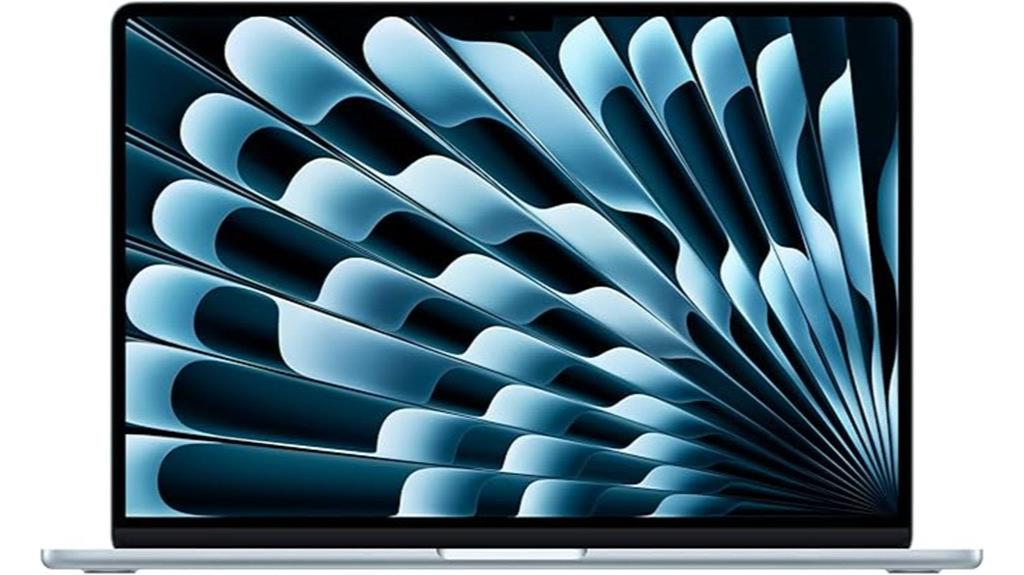
For data analysts who need a powerful yet portable solution, the Apple MacBook Air 15-inch with the M4 chip stands out as an ideal choice. Its impressive performance ensures smooth multitasking and video editing, backed by up to 18 hours of battery life. The 15.3-inch Liquid Retina display supports 1 billion colors, offering stunning visuals for your data analysis. With a 12MP Center Stage camera and high-quality audio from six speakers, your presentations will shine. Connectivity is a breeze with two Thunderbolt 4 ports and Wi-Fi 6E. Plus, Apple’s robust privacy features keep your data secure.
Best For: Data analysts seeking a powerful, portable laptop with exceptional performance and display quality.
Pros:
- Impressive performance with M4 chip for seamless multitasking and video editing.
- Stunning display with 15.3-inch Liquid Retina supporting 1 billion colors for rich visuals.
- Long battery life of up to 18 hours, ensuring productivity on the go.
Cons:
- Limited upgradeability compared to some other laptops, as components are often soldered.
- Higher price point compared to entry-level laptops with similar specifications.
- Fewer ports than some competitors, which may require adapters for additional connections.
4. ASUS Vivobook S 14 OLED Slim Laptop (M5406WA-DS76)
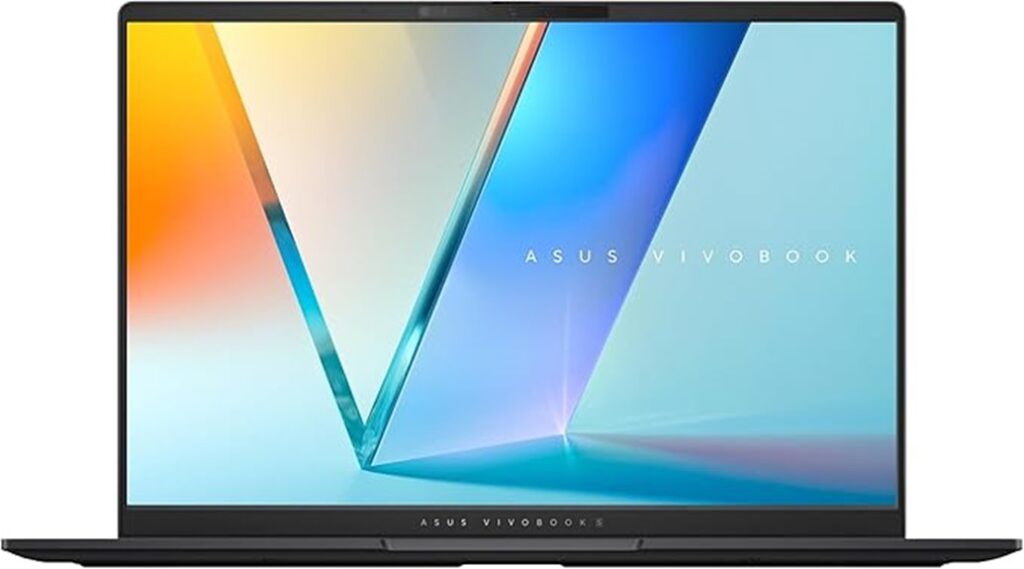
Engineered for data analysts who demand power and precision, the ASUS Vivobook S 14 OLED Slim Laptop (M5406WA-DS76) stands out with its AMD Ryzen 9 365 processor, boasting 10 cores and a remarkable 45+ TOPS NPU. With 24GB LPDDR5X RAM and a 512GB SSD, you’ll experience lightning-fast performance. The stunning 14” 3K OLED display offers vibrant colors and a 120Hz refresh rate, perfect for detailed data visualization. Weighing just 2.87 lbs and measuring 0.63” thick, it’s incredibly portable. Plus, the customizable RGB backlit keyboard enhances your ergonomic typing experience, making it an ideal choice for data analysis on the go.
Best For: Data analysts who require high performance and portability for detailed data visualization and analysis tasks.
Pros:
- Powerful Performance: Equipped with an AMD Ryzen 9 365 processor and 24GB LPDDR5X RAM for smooth multitasking and data processing.
- Stunning Display: Features a 14” 3K OLED display with a 120Hz refresh rate, providing vibrant colors and clarity for data visualization.
- Lightweight and Portable: Weighs only 2.87 lbs and is 0.63” thick, making it easy to carry for on-the-go professionals.
Cons:
- Limited Storage: Comes with a 512GB SSD, which may not be sufficient for users with extensive data storage needs.
- Single-Zone RGB Keyboard: The customizable backlighting is limited to a single zone, which may not appeal to all users.
- Price Point: As a high-performance laptop, it may be priced higher than other laptops with lower specifications, making it less accessible for budget-conscious buyers.
5. Samsung Galaxy Book4 Pro Business Laptop (NP944XGK-KG4US)
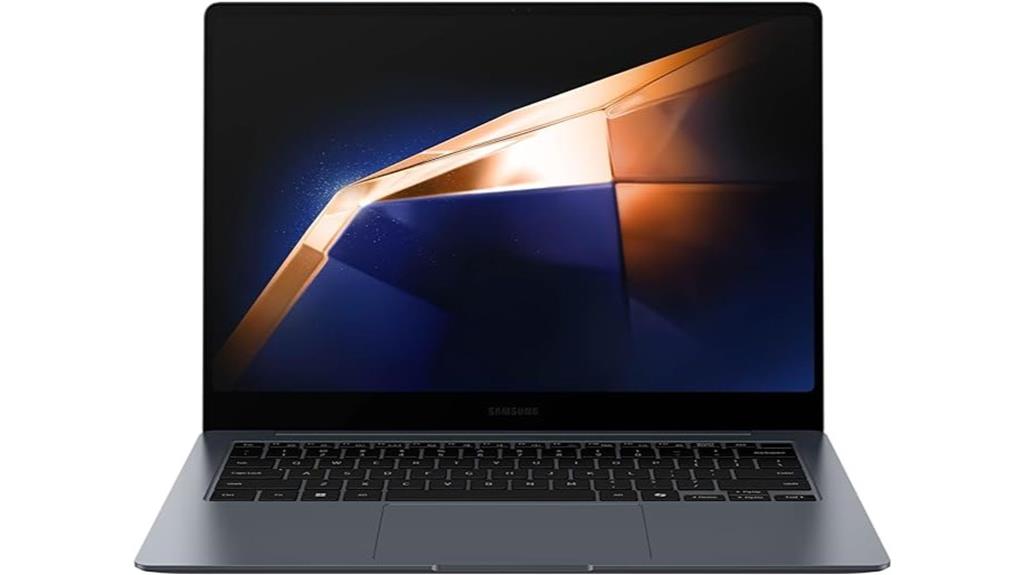
Ideal for data analysts and professionals on the go, the Samsung Galaxy Book4 Pro Business Laptop (NP944XGK-KG4US) boasts a striking 14-inch 3K AMOLED touchscreen that delivers stunning visuals and vibrant colors. With its Intel Core Ultra 7 processor and 32GB of RAM, multitasking becomes effortless. Weighing just 2.71 lbs and measuring 11.6mm thick, it’s incredibly portable. You’ll appreciate its 1TB SSD for ample storage and the 8-hour battery life for long workdays. The device also integrates seamlessly with the Samsung ecosystem, offers strong security features, and includes various connectivity options for your convenience, making it a solid choice for data analysis.
Best For: Professionals and data analysts seeking a powerful, portable laptop with a high-quality display for multitasking and productivity on the go.
Pros:
- Lightweight and slim design at just 2.71 lbs and 11.6mm thick, making it easy to carry.
- Stunning 14-inch 3K AMOLED touchscreen for vibrant visuals and improved clarity in bright conditions.
- Strong integration with the Samsung ecosystem and robust security features, including Samsung Knox.
Cons:
- High retail price of $1749 compared to competitors with similar or better specs.
- Limited RAM upgrade options in certain regions, capped at 16GB.
- Perceived low quality of the OEM SSD from Western Digital for the price point.
ALSO READ: Best Laptops for Data Scientists, Best Laptops for Financial Advisors, Best Laptop for Social Media Influencer, Best Laptop for Karaoke, Best Laptop for Running Solidworks, Best Laptop for Pen Testing, Best Laptop for Podcast Editing, Best Laptop for Recording Podcasts, Best Laptop for Researchers, Best Laptop for Multimedia
Factors to Consider When Choosing the Best Laptop for Data Analysis
When you’re choosing a laptop for data analysis, you need to consider several key factors. Performance and processing power are critical for handling large datasets, while display quality affects your ability to visualize data effectively. Don’t forget about portability, battery life, and connectivity options, as these will impact your overall workflow.
Performance and Processing Power
Choosing the right laptop for data analysis hinges on several key performance factors. First, a powerful processor, like a multi-core CPU or dedicated GPU, is crucial for efficiently handling large datasets and complex algorithms. You’ll want at least 16GB of RAM to ensure smooth multitasking, especially when juggling multiple applications. Storage speed also matters; opt for an SSD to enhance data access times, which can significantly improve your analysis performance. Integrated AI features in processors can further accelerate compute times for machine learning tasks, delivering quicker insights. Lastly, consider battery life; a longer-lasting battery allows you to work uninterrupted during field data collection or off-site analysis, making your data analysis more efficient and convenient.
Display Quality and Resolution
Performance and processing power are important, but display quality and resolution play a significant role in your data analysis experience. A higher resolution, like 2880 x 1800 or 3840 x 2160, ensures sharper visuals for clearer data visualization. Look for displays with peak brightness of 600 nits or more, enhancing visibility in various lighting conditions, especially when you’re on the go. Opting for an OLED or Liquid Retina display provides better color accuracy and contrast, letting you differentiate data points and trends more effectively. Additionally, a 120Hz refresh rate improves the fluidity of scrolling through large datasets, while a 16:10 aspect ratio offers extra vertical space for viewing multiple data columns simultaneously, making your analysis more efficient.
Portability and Weight
Portability and weight are vital factors for data analysts who often work in diverse locations. You’ll want a laptop that weighs between 2.5 and 3.5 pounds, making it easy to carry. A slim profile, ideally under 0.7 inches thick, ensures you can slip it into your backpack or briefcase without hassle. Look for models with 14 to 15-inch screens; they offer a good balance between screen real estate for data visualization and portability. Combining lightweight design with durability is essential, as robust materials and sturdy hinges help your laptop withstand frequent movement. This thoughtful approach to portability allows for a comfortable, efficient work experience no matter where you are. Keep these factors in mind to enhance your data analysis workflow.
Battery Life Duration
When you’re diving into data analysis, having a laptop with robust battery life can make all the difference. Extended usage without interruptions allows you to have efficient work sessions and significantly reduces downtime for charging. Many laptops offer battery life from 8 hours to over 18 hours, thanks to the power efficiency of their processors and display technologies. If you often work remotely or travel, a laptop with all-day battery life ensures you stay productive without hunting for a power source. Keep in mind that tasks like graphically intensive data visualization can drain your battery faster than standard spreadsheet work. Fast charging capabilities also matter, letting you quickly recharge during short breaks and minimizing workflow disruptions.
Connectivity Options Available
While battery life keeps you productive on the go, the right connectivity options are equally important for effective data analysis. Look for laptops with multiple USB ports, including USB Type-C and Thunderbolt 4, to ensure compatibility with various peripherals essential for your work. Models with microSD card readers are also handy for quickly transferring large datasets from external storage.
Additionally, ensure your laptop supports Wi-Fi 6E for faster internet connectivity, which is crucial for utilizing cloud-based tools and collaboration. Evaluate the availability of HDMI ports to connect to external displays, offering more screen real estate for multitasking and data visualization. Lastly, check for Bluetooth support to facilitate wireless connections with devices like printers and input tools.
Operating System Compatibility
Choosing the right operating system for your laptop is crucial to ensure compatibility with the data analysis software you’ll be using. Make sure the OS supports applications like Microsoft Excel, R, Python, or other specialized tools. It’s also important to check if the system can handle the latest updates and features needed for these applications, as some have specific requirements. Look for an OS that allows efficient multitasking and resource management to effectively work with large datasets and complex analyses. Additionally, strong integration with other tools you rely on is essential for seamless data transfer and collaboration. Lastly, evaluate the security features within the OS to protect sensitive data and comply with data protection regulations.
Price and Budget Considerations
Having a compatible operating system sets the foundation for effective data analysis, but budget considerations play a significant role in your laptop selection. Establish a clear budget range based on your needs; prices can vary from budget-friendly models to high-end options exceeding $1,500. Keep in mind the trade-off between price and performance; investing more typically means better processing power, RAM, and storage—key components for data analysis. If you’re a student or educator, explore financing options or educational discounts that many manufacturers offer. Also, consider the total cost of ownership, including potential upgrades and software licenses. Lastly, research resale values, as certain brands retain value better, helping offset the initial purchase cost over time.
Frequently Asked Questions
What Is the Ideal RAM Size for Data Analysis Laptops?
For data analysis laptops, you’ll want at least 16GB of RAM to handle large datasets efficiently. If you’re working with complex models or multitasking, consider upgrading to 32GB for smoother performance and faster processing times.
How Important Is Battery Life for Data Analysis Tasks?
Battery life’s crucial for data analysis tasks. When you’re on the go, you need your laptop to last through long sessions. A reliable battery lets you focus on your work without constant interruptions for charging.
Are Gaming Laptops Suitable for Data Analysis?
Gaming laptops can be suitable for data analysis since they often have powerful processors and ample RAM. However, consider their weight and battery life, as you might need portability and longevity for extended data tasks.
What Software Is Commonly Used for Data Analysis on Laptops?
For data analysis on laptops, you commonly use software like Excel, R, Python, and SQL. Each tool offers unique features, helping you visualize data, run statistical analyses, and manage databases effectively for your projects.
How Do I Improve My Laptop’s Performance for Data Analysis?
To improve your laptop’s performance for data analysis, upgrade your RAM, optimize storage with an SSD, keep your software updated, close unnecessary applications, and regularly clean your system to enhance speed and efficiency.
My Final Opinion
In 2025, choosing the right laptop for data analysis can significantly enhance your productivity. Whether you prefer the power of the Apple MacBook Pro with its M4 chip or the lightweight versatility of the Acer Swift X, there’s a perfect fit for your needs. Consider factors like performance, battery life, and display quality to make your decision. With the right laptop, you’ll be well-equipped to tackle any data challenge that comes your way.
